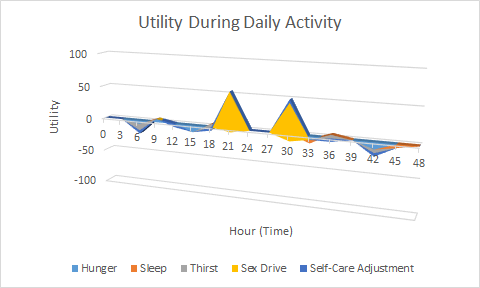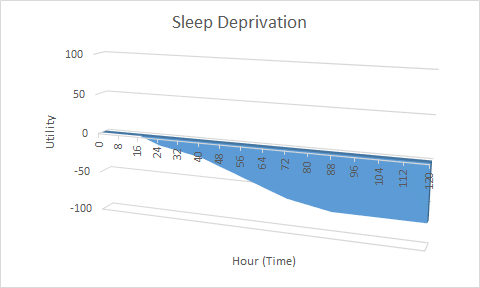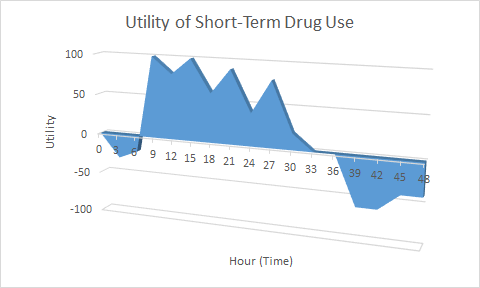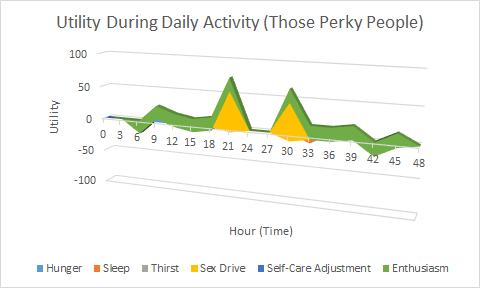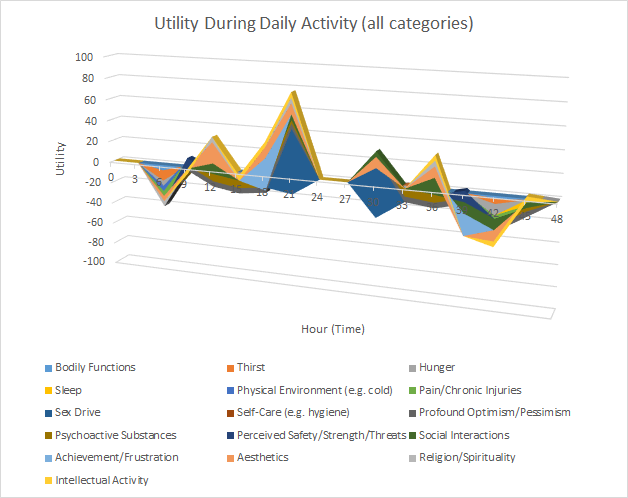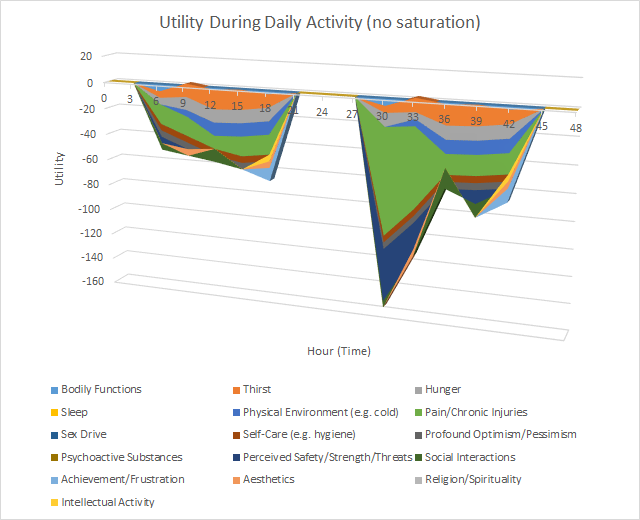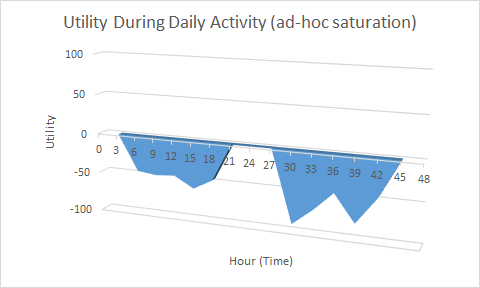By the lifetime value function, I mean to explain several concepts:
– What it means quantitatively to evaluate the value a human is getting, at least in a rough sense
– What are the bounds on the possible value a human can experience
– To categorize the various components of and hence influences on a human’s value function, which will be explained on other pages
In this discussion, the bounds of a human’s possible value are: the experienced value in consciousness over a person’s lifetime (contrasted with out of consciousness), based on a theory of reward centers and the impact of various events in the objective materialist world-view on those reward centers.
The explanation of reward centers is:
– The value associated with the reward centers does vary based on the individual, and even varies over the lifetime of the individual.
— For instance, since the reward centers are assumed to be related in some way by various neurons in the brain, damage to or loss of those neurons may result in permanent value loss.
– Common and high-magnitude rewards include sleep, food, water, and freedom from physical discomfort such as freezing or beatings.
An introductory chart:
with assignments to the utility values as:
Impact Low High Extreme Pain -100 -80 Pain -80 -40 Aching -40 -20 Discomfort -20 0 Neutral 0 0 Comfort 0 20 Engagement 20 40 Happy 40 80 Euphoria 80 100
Of course, the effects on utility of each of these factors is not necessarily linear, but the nonlinearity is usually irrelevant when we talk about improving utility.
Only you can determine exactly how the relative values shown here translate to your own feelings.
An example of a longer graph for sleep deprivation:
One that shows the potential short-term benefit of drug use:
And two that illustrate the long-term detriment:
One that shows the full complement of happiness categories:
And one that illustrates how things are different in plantation slavery:
But note the values over the nominal -100, so we need to do some saturation calculation on it to get it back to sanity:
Notice that of these categories, how many of them are about taking care of your body. So many times you see people engaging in “heroism” by working long hours and depriving themselves of sleep, exercise, and otherwise ignoring their own health. With current and anticipated medical technology, no amount of money is going to undo decades of poor choices, or give you back the days of possible happiness that you gave up to work. You should note that a middle-income or even poor person easily could outdo some of these titans of industry.
Also, if we say that the way to maximize happiness is to get the maximum area under the curve, and if many of the things that make us happy follow the pattern of satiety, with a gradual increase in pleasure for repeating the actions since then, then “living the good life” should be about variety and “hitting the top of the curve” instead of long periods of work or long periods of leisure.
Hence in philosophy we consider as the detailed topics:
– How to learn what your own value function/factors are, and their magnitudes
– How correctly to predict your future value
— How correctly to predict from a logical perspective
— The full process by which you should carry out the prediction/estimation of your future value, including gathering facts, applying correctly bounded critical estimation parameters, choosing appropriate models, and then applying your own value function against the future situations
— The facts that define the bounds of critical estimation parameters which are difficult exactly to quantify
— Special topics and focus areas in prediction, mainly human behavior
– The applications of the theory to everyday life
— Enough framing and context to create the basis for shared understanding about the current situation
— How to understand and factor in outside (usually historically significant) influences that can alter your ceteris paribus prediction, where your own choices are assumed to take effect
— Saving you work and error by pre-applying the philosophy to government, the economy, and to those aspects of your personal life that are invariant. That is, creating a default ideology, the open areas of which you optimize for yourself.
— The checklists that define your routines
The end goal of all this is that you live the “good life” to the extent that you can.
Original spreadsheet:
Happiness Charts – V1
